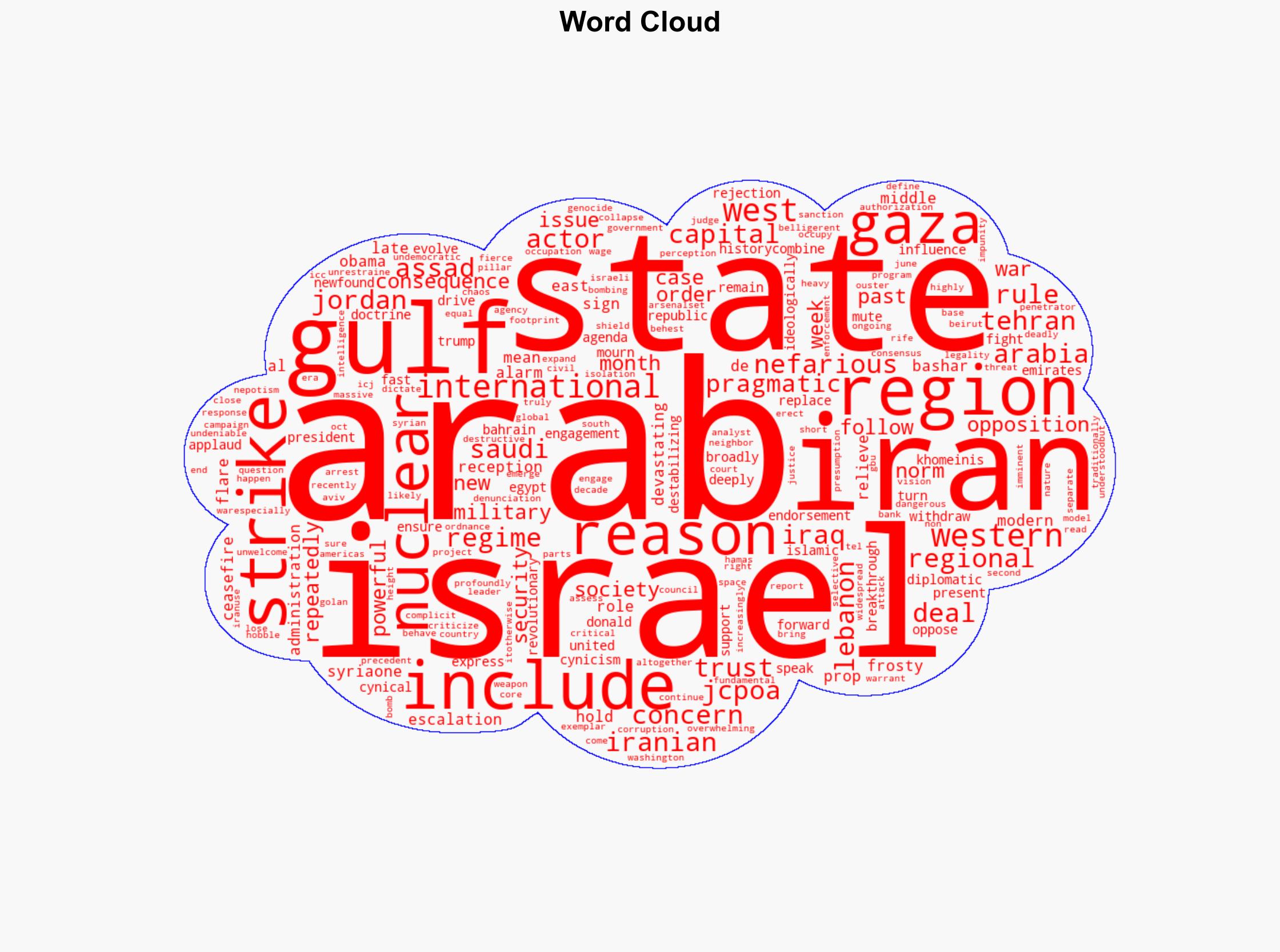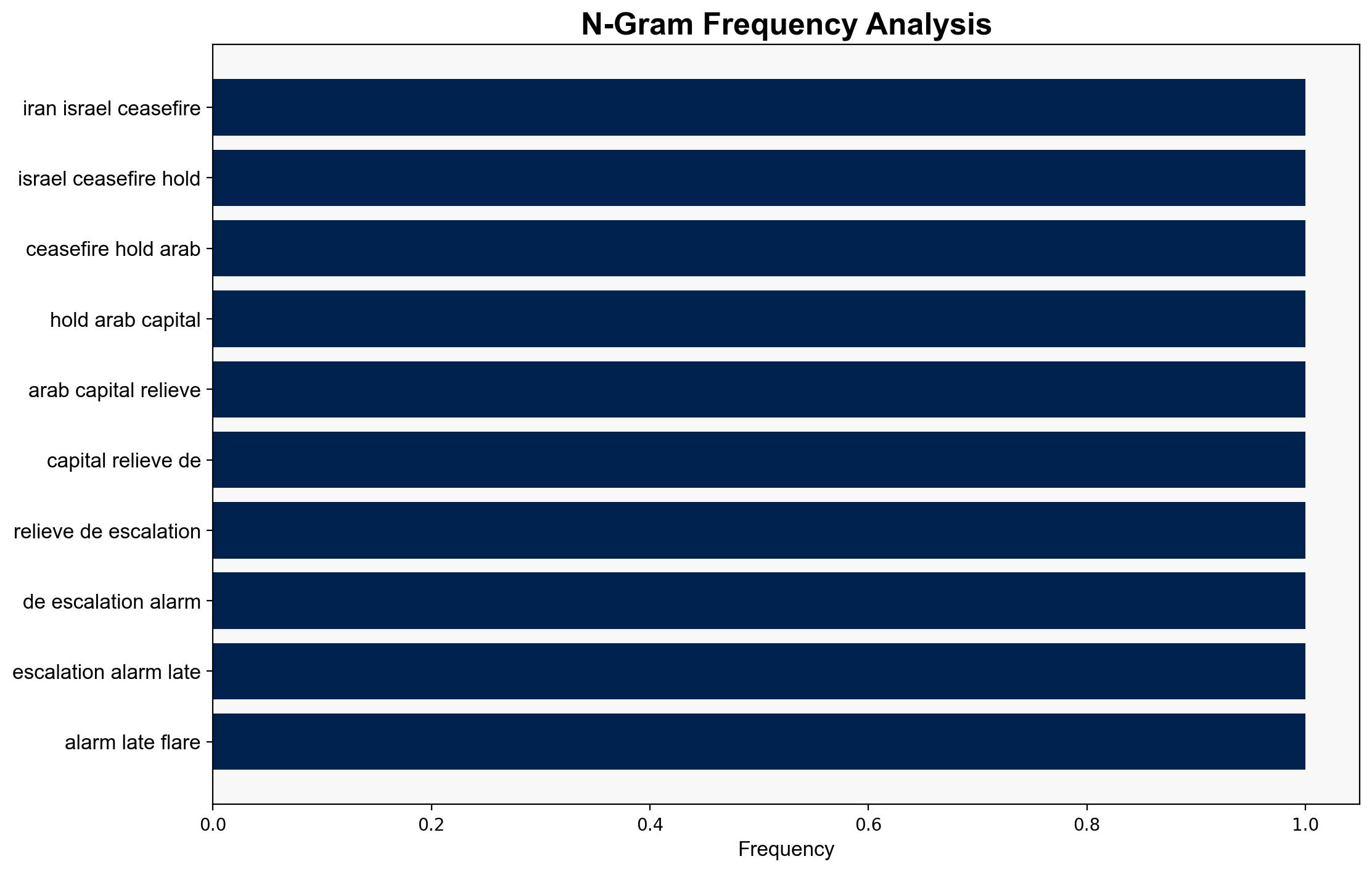The Iran-Israel War Is Over But the Arab World Is Grappling With Its Consequences – Time
Published on: 2025-06-30
Intelligence Report: The Iran-Israel War Is Over But the Arab World Is Grappling With Its Consequences – Time
1. BLUF (Bottom Line Up Front)
The recent cessation of hostilities between Iran and Israel has left the Arab world facing significant geopolitical and security challenges. The ceasefire has temporarily eased tensions, but underlying issues persist, particularly regarding Iran’s regional influence and Israel’s military actions. Key recommendations include strengthening diplomatic engagement with regional actors and enhancing intelligence-sharing mechanisms to monitor evolving threats.
2. Detailed Analysis
The following structured analytic techniques have been applied to ensure methodological consistency:
Causal Layered Analysis (CLA)
Surface events highlight the immediate ceasefire and regional relief. Systemic structures reveal ongoing distrust towards Iran’s intentions and Israel’s military strategies. Worldviews are shaped by historical grievances and power dynamics, while myths perpetuate narratives of Western bias and regional instability.
Cross-Impact Simulation
The ceasefire’s impact on neighboring states includes potential shifts in alliances and economic dependencies, particularly among Gulf states wary of Iran’s influence.
Scenario Generation
Possible futures range from renewed conflict if diplomatic efforts fail, to a stabilized region if trust-building measures are successful. Key variables include international diplomatic interventions and internal political changes within Iran and Israel.
Narrative Pattern Analysis
Ideological narratives focus on perceived Western double standards and the legitimacy of regional power structures. These narratives influence public opinion and policy decisions across the Arab world.
3. Implications and Strategic Risks
The region faces risks of renewed conflict, exacerbated by unresolved territorial disputes and ideological divides. Cybersecurity threats may increase as state and non-state actors exploit regional instability. Economic vulnerabilities could arise from disrupted trade routes and fluctuating oil prices, impacting global markets.
4. Recommendations and Outlook
- Enhance diplomatic channels with key regional players to foster dialogue and reduce tensions.
- Develop joint intelligence initiatives to monitor and counteract regional threats.
- Scenario-based projections suggest that a best-case scenario involves successful diplomatic engagement, while a worst-case scenario could see a resurgence of hostilities.
5. Key Individuals and Entities
Notable figures include leaders from Iran, Israel, and key Arab states. Their decisions will significantly influence the region’s trajectory.
6. Thematic Tags
national security threats, cybersecurity, counter-terrorism, regional focus




